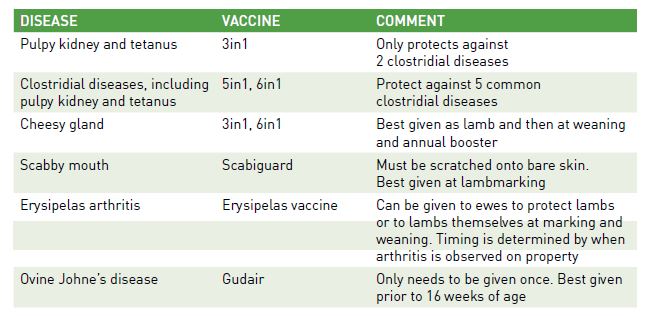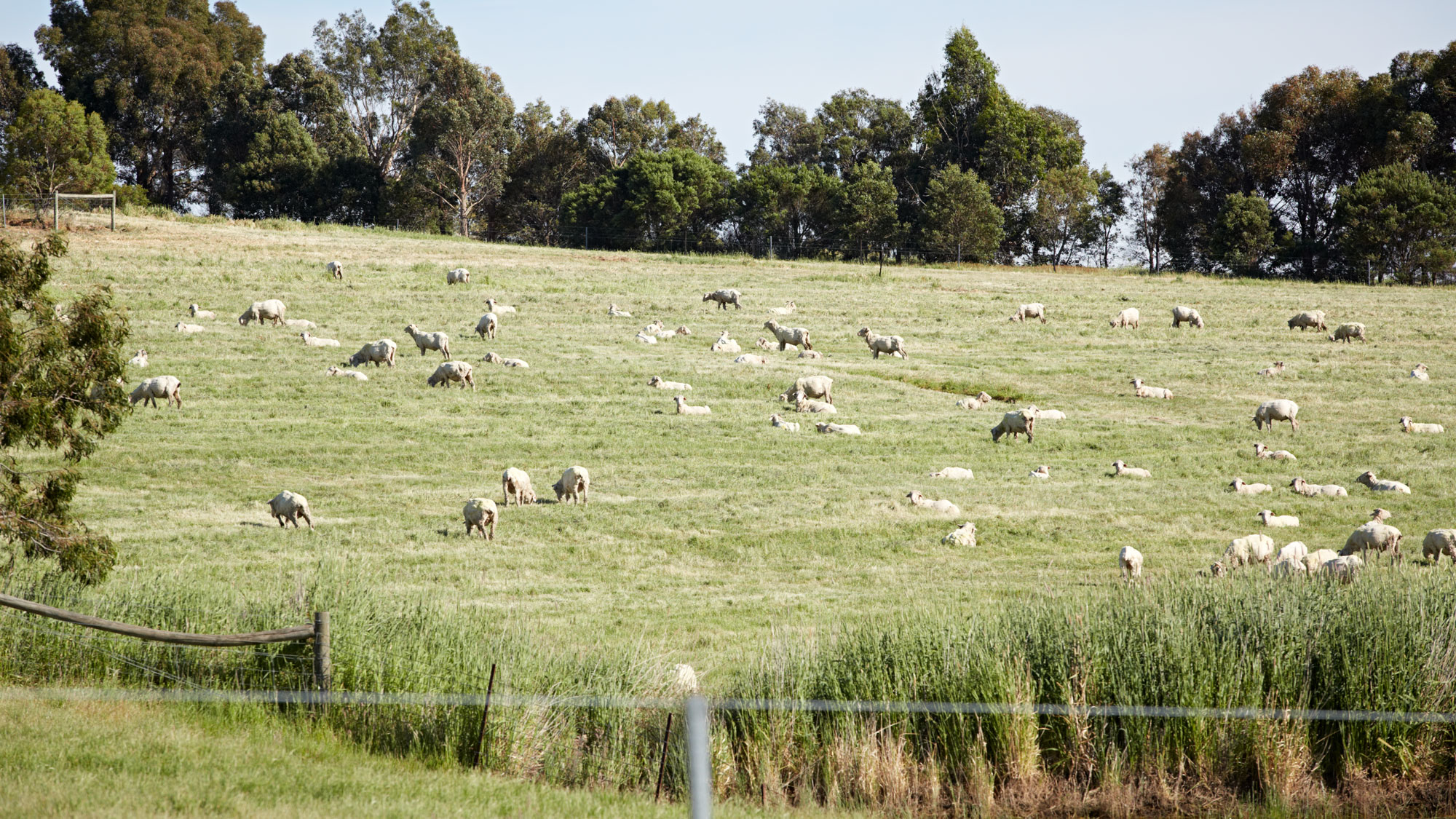Tool 11.12 Prevention of clostridial diseases and cheesy gland
Prevention of clostridial diseases and cheesy gland
Use this tool to help identify the pre-disposing conditions for the development of clostridial diseases and cheesy gland. If these conditions exist on your property, adopt management strategies to control or eradicate the diseases and prevent future occurrences. Both clostridial diseases and cheesy gland are prevented by vaccination.
All unvaccinated stock (regardless of age) require two doses of vaccine to be effective – one dose does not provide any protection as it creates a small primary response which must be soon followed by a second dose to allow the body to encounter the antigen again soon after. It is this secondary response which is much larger, much quicker, and more prolonged.
If ewes are given a pre-lambing vaccination (e.g. their annual booster 4-6 weeks before lambing), lambs receive antibodies (not antigens) in the colostrum that were produced by the ewe in response to vaccination. Antibodies, however, do not activate the lamb’s own immune system. The newborn animal is protected by the dam’s antibodies (so-called ‘passive immunity’) until these die out at 8–12 weeks. Only when the young animal’s own lymphocytes have been exposed to the antigen will active immunity develop as the lamb starts to produce antibodies of its own.
For more information on how vaccines work to protect your sheep, check out NSW DPI Agnote How vaccination works.
|
Disease |
Conditions when likely to occur |
Clinical signs |
Vaccination strategy |
| Clostridial Diseases | |||
| Tetanus | Penetrating wound (including marking wounds) | Stiff-legged gait followed by convulsions, initially stimulated by sound or touch and gradually progress in severity |
Young lambs: Vaccinate ewes 4–6 weeks before lambing. Lambs: Vaccinate at marking and give a booster 4–8 weeks later (usually at weaning). Older stock: Annual booster timed before high-risk period or pre-lambing. Vaccination for pulpy kidney may be required more frequently in high-risk situations, such as grain feeding in drought or grazing high-quality fodder crops. New stock: Implement vaccination procedures as for normal stock. If history of vaccination known, implement flock program. If vaccination history not known, give an initial dose, then booster 4–8 weeks later. Sudden changes in feed quality, particularly where sheep move rapidly onto high quality pasture from supplementary or dry feed and vice versa, increases the risk of pulpy kidney. If stock have not been vaccinated in the three months prior to the feed change, vaccination at least 10 days prior to exposure to the new feed is advisable, as well as minimising the risk of stock gorging on the new feed by allowing them access to it in the afternoon when they’ve had a chance to fill up on the feed they’ve been on throughout the morning. |
| Blackleg | Muscle bruising, growing animals | Severe lameness, swelling of affected leg, very depressed, fever, skin dry and cracked, often sudden death | |
| Black disease | Liver fluke infestation | Depression and abdominal pain, sudden death | |
| Malignant oedema | Wounds | Contaminated wound, often associated with lambing, local swelling, fever, severe toxaemia and death | |
| Pulpy kidney | Lush pasture, heavy grain feeding, change of feed | Convulsions, sudden death | |
|
Please note:
|
|||
| Cheesy gland |
Infection commonly through shearing cuts or directly through freshly shorn skin, in count out pens by sheep coughing on each other, or dipping immediately after shearing. Can also be spread by rubbing and contamination of wounds and broken skin when animals are in close contact, for example when sheep are held in small yards or closely grazed on contaminated grass or in feed troughs. Infection is widespread and does not cause serious production losses on farm but is a major cause of economic loss to the meat industry due to condemnations and carcase trimming. |
Abscesses develop in lymph nodes around the body and are obvious in freshly shorn sheep. Sometimes sheep will cough if abscesses are present in the lungs |
Cheesy gland vaccine is incorporated in clostridial vaccine, either as 3-in-1 or 6-in-1. Initially two doses are required to provide protection, and then an annual booster is necessary to maintain it. Sucker lambs do not need vaccinating against cheesy gland as they are sold before abscesses develop. Dipping hygiene is important and sheep should only be dipped if attempting to eradicate lice. Sheep should be carefully shorn to avoid shearing cuts and not dipped until cuts have healed. |
Available vaccines
Several companies sell vaccine as either 3-in-1 (pulpy kidney, tetanus, cheesy gland) or 5-in-1 (pulpy kidney, tetanus, black disease, blackleg, malignant oedema) or 6-in-1 (pulpy kidney, tetanus, black disease, blackleg, malignant oedema and cheesy gland).
Vaccines are also available in combination with vitamin B12 and trace elements such as selenium but these types should only be used when cobalt or selenium are deficient.
 Source: AWI & Zoetis RAMping Up Repro
Source: AWI & Zoetis RAMping Up Repro
For more information on management of clostridial diseases in your sheep, read MMFS Clostridial diseases fact sheet.






